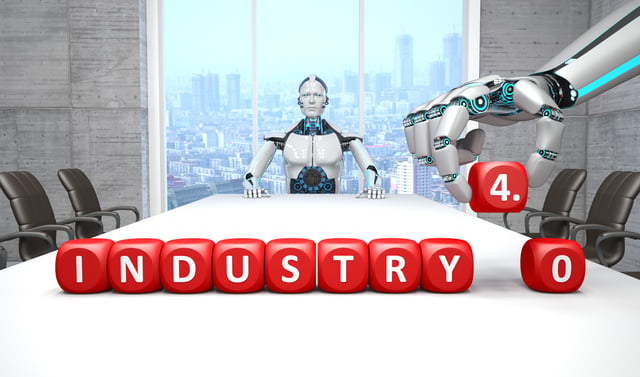Sep 17, 2019
How job roles will change as a result of 4IR

Some form of energy fuelled the 1st, 2nd, and 3rd industrial revolutions. The 1st revolution used steam, the 2nd – electricity; the 3rd saw the emergence of nuclear energy and the rise of electronics with the microprocessor as well as the rise of telecommunications and computers.
The 4th industrial revolution is the first revolution that is rooted in new technology rather than a new type of energy where data and machine learning fuel smart, autonomous systems. Jobs and skills in the earlier revolutions looked a lot different from the skills needed now. As companies start to adopt technologies like collaborative robots, artificial intelligence, and data analytics, the way their supply chain functions will radically change as will the nature of the work itself. New technologies are creating previously unthinkable capabilities in the supply chain, such as 24/7 connectivity, enhanced visibility, and efficiency.
The workforce faces disruption as the adoption of technology increases. Business success may hinge on the ability of the workforce to adapt and integrate with these new technologies.
The hard-cold fact is that robotics and automation can automate work functions such as packing cartons, for example, and this is resulting in the elimination of these, and other jobs. Let's see how specific roles can be improved or augmented using new technologies as opposed to being replaced. Consider, for example, the implementation of RFID tags on your inventory items to replace old barcode scanning. This does not change the job function but improves efficiency and increases visibility through an improved line of sight and read rates seen in RFID technology. The business benefit is huge without any significant impact on the worker's job.
Augmented Reality (AR) is another technology worth investigating. Think for a moment how you can improve your picker's efficiency by implementing augmented reality in the warehouse. AR will enable them to visualize exactly where a product is in the warehouse, saving time. AR used for staff training can dramatically reduce your training costs as staff can log in from anywhere in the world and learn how to operate heavy machinery or operate your robotic tools as an example. No more expensive flights, accommodation, and training room costs. This is just another example of how to integrate technology in your workforce without losing your human capital. New job roles are being created all the time, such as data scientists, robotics, and technology experts. Data analysts to analyze the wealth of information that comes with these new technologies is another job role that will be in demand.
Current roles are also changing; the Buyer of yesterday was skilled in transaction processing. The Buyer of tomorrow needs to understand commodity markets and have strong negotiation skills. Freeing up staff's time spent on mundane tasks will allow them to focus on more essential functions like improving high-level strategy and building relationships with customers, suppliers, and other stakeholders. Building relationships are increasingly critical to a successful business, and this, being a 'soft' skill, is highly unlikely ever to be replaced by technology.
Now is the time to encourage your staff to be flexible and to adapt their skillset to include skills like relationship building and problem-solving. Encourage them to embrace the changes coming their way and show them how they will fit into the broader business. Ensure they understand that the 'future of work' is not a robot apocalypse but an era of human to machine collaboration.
Companies need to look at how the future of their workforce and the future of their technologies align. Stay flexible in your approach and continue to evaluate priorities and tactics to evolve your future business and workforce structures effectively.
Connect with NETSTOCK CEO, Tony Sinton on LinkedIn here
Written by Tony Sinton
Tony is the group CEO and co-founder of NETSTOCK, the first fully cloud-based inventory management solution. Tony provides strategy on supply chain management and has spent the last 30 years enabling thousands of companies across the world to better manage their inventories.
